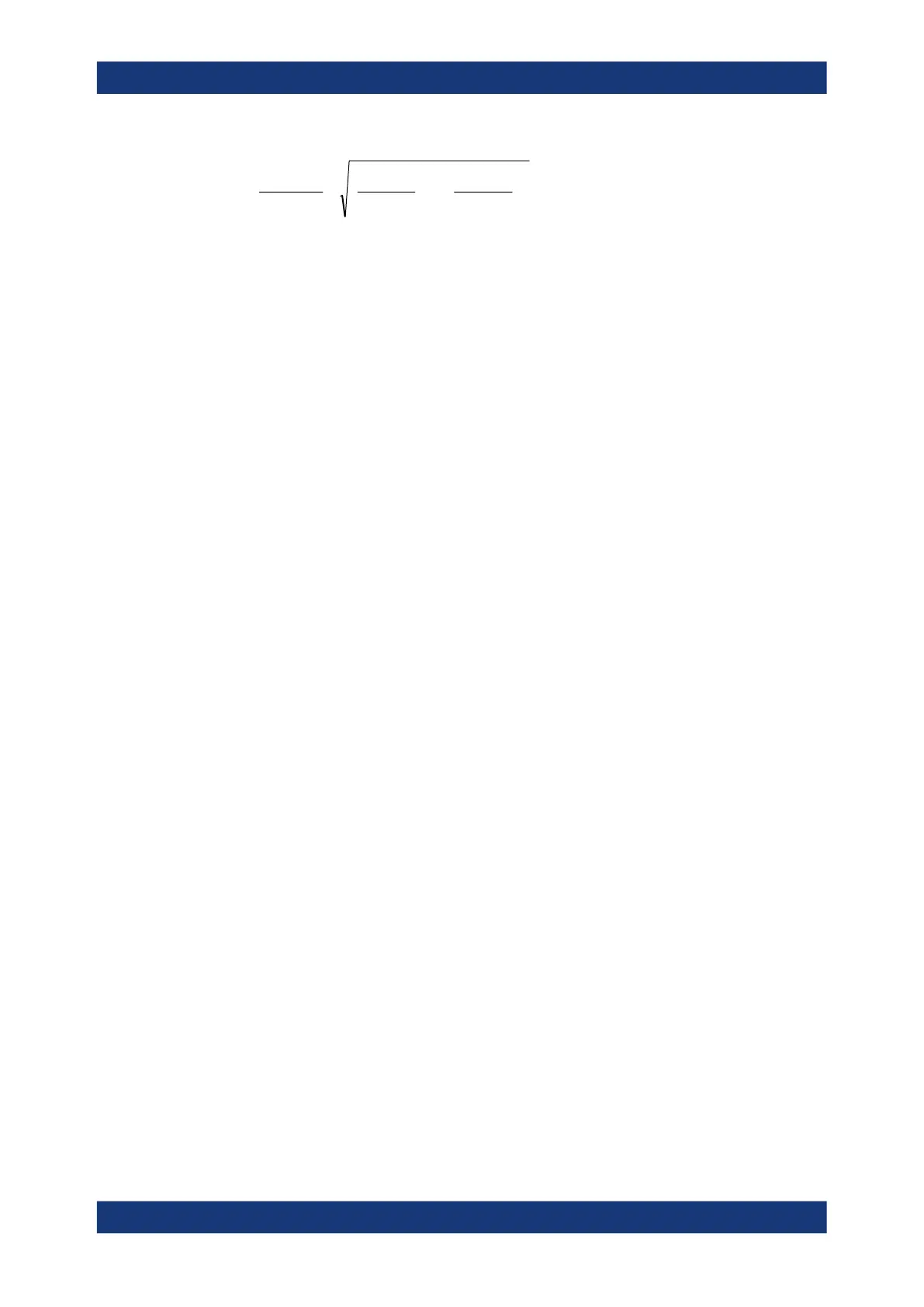Acquisition and waveform setup
R&S
®
RTP
139User Manual 1337.9952.02 ─ 12
22
111
scopeprobesystem
BWBWBW
To measure the signal with low measurement error, the system bandwidth should
be higher than the highest frequency component of the signal. The probe band-
width must be even higher than the system bandwidth.
●
Impedance:
A minimum impedance is required to keep the circuit loading low. Over frequency,
the impedance decreases, in particular with passive probes. The probe impedance
should be approximately 10 times the impedance of the circuit test point at the
highest signal frequency.
Active voltage probes - general
Active probes require operating power from the instrument and have a proprietary
interface to the instrument. Their main qualities are:
●
Low loading on signal source
●
The probe is automatically recognized by the instrument, no adjustment is
required.
●
Adjustable DC offset at probe tip allows for high resolution on small AC signals
which are superimposed on DC levels.
●
Connections should be as short as possible to keep the usable bandwidth high.
●
Observe the operating voltage range.
●
The probe impedance depends on the signal frequency.
RT-ZS single-ended active probes and RT-ZD differential active probes provide special
features for easier use and precise measurements. These special features are not
available on RT-ZSxxE probes.
●
The micro button on the probe head remotely controls important functions on the
instrument, like running and stopping the acquisition, autoset, AutoZero and setting
the offset to mean value.
●
The R&S ProbeMeter measures DC voltages between the probe tip and the
ground connection with very high precision. The result is displayed on the instru-
ment's screen. So you can check DC voltages with different levels without having
to adjust the measurement range of the oscilloscope. The R&S ProbeMeter also
measures the zero error of the probe to optimize measurement results at small sig-
nal levels.
When you connect an R&S RT-ZSxx active probe to a channel input of the R&S RTP,
the oscilloscope recognizes the probe. It reads the identification and calibration data
from the probe box and shows the result in the "Setup" and "Probe Attributes" tabs.
This data together with the deskew time for a given channel is stored and processed
by the R&S RTP. If you connect the probe the next time to the same channel, the infor-
mation is fetched and used.
Basics

